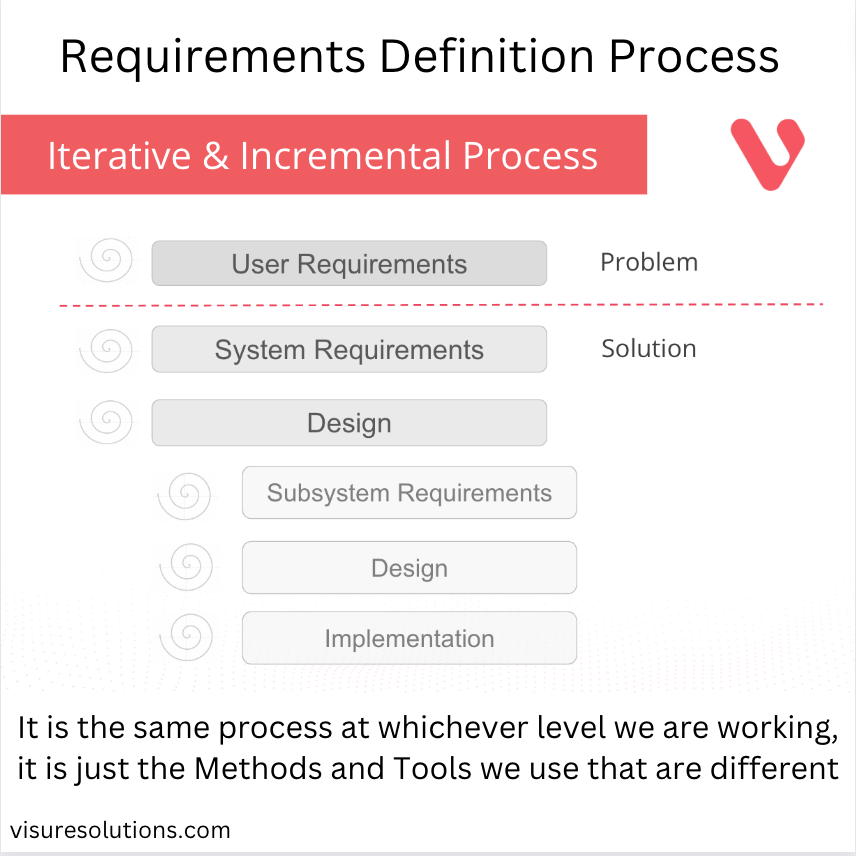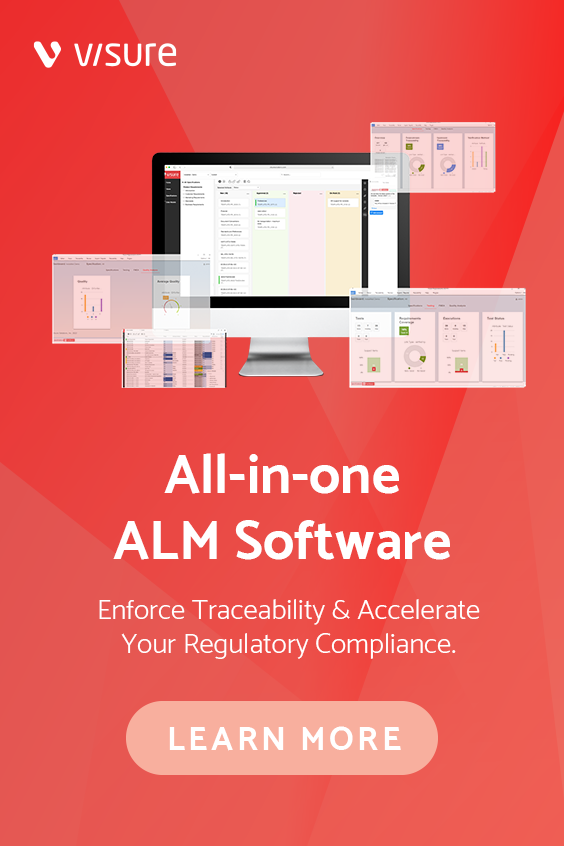One of the most important parts of any software development project is creating detailed, accurate requirements. Without a clear understanding of what needs to be built, it’s impossible to create a high-quality end product. Unfortunately, writing good requirements is often easier said than done. The primary reason that people write poor requirements is that they have had no training or experience in writing good requirements. If you or your staff have problems with writing good requirements, you may benefit from guidance on how to write good requirements. By taking the time to learn how to write better requirements, you can improve the overall quality of your software development projects – and save yourself a lot of headaches down the road.
Why do Systems Engineering Projects Fail?
Why do projects in heavily regulated industries fail? Many researchers have investigated why systems and software projects fail. The Standish Group conducted research in 2009, which highlights that most reasons projects fail are related to requirements.
That is one of the main reasons why writing good requirements is crucial for project success. Additionally, writing good requirements brings many other benefits across teams.
What is Requirements Specification?
Requirements specification is a process in which requirements are defined, documented, and analyzed. It’s an important part of software development because it ensures that all stakeholders agree on the functionality of the software before development begins. By doing this, reduces the likelihood of misunderstandings and reworks later on.
Requirement specification, also known as documentation, is a process of jotting down or writing all the system and user requirements in the form of a document. These requirements must be clear, complete, comprehensive, and consistent.

Requirements Engineering Process

There are a few activities that we face when working with the requirements. In the Requirements Engineering cycle, there are five main activities, namely,
- Requirements Elicitation – This is the process of gathering, reviewing, and understanding the stakeholder and user needs and constraints for the season. Users need domain information, existing system information, regulations, standards, etc. Based on this information, we elicitate the requirements. After this, we move to requirements analysis and negotiation.
- Requirements Analysis and Negotiation – Analysis is the process of refining the user needs and constraints on the basis of gathered and elicitated information. Then, we move to the documentation activity.
- Requirements Documentation/Specification – After getting the requirement specifications, we move to the documentation part. We document the user needs and constraints clearly and precisely.
- Requirements Validation – Finally, in the validation activity, we insert that the season requirements are complete, concise, and clear.
- Requirements Management – Requirements management is a way of collecting, analyzing, refining, and prioritizing all the products or requirements, in the development phase. During this phase, solid traceability between the requirements and sources of information is also established.
When we finalize these five activities, we repeat them time and again until we get a set of agreed requirement documents that are formal specifications.
Why is it important to write good requirements?
There are many benefits of having good requirements specifications. Some of them are listed below:
- Helps to ensure that all stakeholders have a common understanding of the system that is to be developed. This avoids any misunderstanding during later stages of development.
- Serves as a reference point for all stakeholders during the development process.
- Helps to identify any gaps in the requirements at an early stage.
- Reduces the overall cost and time of development as it avoids rework due to changes in requirements.
What do we achieve by writing great requirements?
There are many things great requirements help in achieving. Some of them are listed below:
- Great requirements help to ensure that the system being developed meets the needs of the users.
- They serve as a basis for testing the system to ensure that it works as expected.
- They help reduce the overall cost and time of development by avoiding rework due to changes in requirements.
- Great requirements help to make the development process more efficient and effective.
Challenges When Writing Requirements
There are various challenges people face when writing requirements.

Poor Paperwork – In some organizations, documentation of processes is either nonexistent or not up to par. In this case, collecting requirements becomes a two-step process: first reverse engineering the existing process, and then identifying areas needing improvement and optimization. To confirm that requirements are fleshed out and accurate, it’s key to identify key stakeholders and subject matter experts, engaging with them directly. Drawing business process maps and visualizing workflows are two excellent ways to do so. This aids in the elimination of incorrect assumptions while also providing a complete picture. Drawing process maps and displaying processes are two useful approaches for this purpose.
Contradicting Requirements – When stakeholders have different priorities for their business goals, this leads to requirements that conflict with each other. In cases such as these, the responsibility of a business analyst is to document all requirements in detail, identify which requests oppose each other, and allow stakeholders the opportunity to decide what takes priority.
You can’t make decisions without hearing stakeholders’ input, and as a business analyst, you may have some ideas about what should be prioritized. It’s still crucial to hear the perspective of stakeholders. Setting up a poll might be one of the methods to obtain clarity on what matters most to the majority of stakeholders.
Unavailability of User Input – A few reasons may contribute to the unavailability of end users, and each requires its own resolution. For instance, sometimes end users are so preoccupied with their daily work that they’re unwilling to partake in requirements-gathering activities.
In such cases, the best a business analyst can do is to limit the number and length of engagements. Prior to the meeting, doing as much research as possible will help to make the discussion more organized and informative. It’s almost like turning requirements gathering into requirements validation sessions. defining focus groups and identifying the most suitable end-users for each group
Focusing on Interface Instead of Experience – Many stakeholders and end-users have a clear vision of how the new solution should appear, but they don’t know what it should accomplish. Any system’s user interface is crucial, but it shouldn’t define or interfere with the functionality.
Business analysts should always remember to keep design and functional requirements separate in their documentation. By using more general tools such as diagrams, user stories, or low-fi prototypes rather than design drafts, they can maintain focus on the functional aspects of requirement gathering.
Stakeholder Inputs – When stakeholders or end-users try to tell designers how the system should work instead of what the system should do, it can lead to suboptimal designs. To head this off, validate each potential ‘false requirement’ by asking ‘why?’ until you arrive at the real problem that needs solving.
Communication Issues – Among the issues that can lead to miscommunication between a business analyst and other parties are language barriers, wrong assumptions, insufficiently explained vocabulary, and overuse of technical terms.
The ideal approach to avoid this problem is to interact frequently and develop two-way conversations. Document the needs that you’ve discovered and submit them for peer review and criticism to a variety of subject matter specialists, create a glossary of jargon and double-check premises.
Standards for writing requirements?
EARS would be an effective methodology here. It stands for Easy Approach to Requirements Syntax, by Alastair Marvin. In this method, we write clear, concise, and understandable language. This improves the whole requirements engineering workflow and simplifies the work by making things pretty easy to understand.
To achieve this, here are some principles that must be kept in mind while writing the requirements. They involve:
- Each requirement must be in the form of a complete sentence. No bullets, acronyms, abbreviations, or buzzwords should be used. Try to make short, direct, and complete sentences.
- Make sure that each requirement has a proper subject, predicate, and verb. The subject would be the user type or the system that we are talking about. The predicate would be the conditions or actions or desired results we expect. We must use words like ‘shall’, ‘will’, and ‘must’ to express some kind of necessity, and words like ‘may’ to express optionality in the requirement.
- Each requirement must efficiently explain the end result we desire from the system.
- Also, the requirement must describe the quality we expect from the system. It helps when we measure the end result and see if the requirement is properly implemented or not.
Essential Components of a Requirements Document:
The main sections of a software requirements specification are:
- Business Drivers – The reasons why the customer is looking to build a system are described in this section. This section further includes the problems the customer is facing with the current system and the opportunities the new system will be providing.
- Business Model – The business model that the system is entailed to support is discussed in this section. It further includes various other details like the organizational and business context, main business functions, and process flow diagrams of the system.
- Functional and System Requirements – This section typically details requirements that are organized in a hierarchical structure. The functional requirements are at the top level and the detailed system requirements are listed as sub-items.
- System Use Cases – This section consists of a Unified Modeling Language (UML) use case diagram explaining all the key external entities that will be interacting with the system and the different use cases they’ll have to perform.
- Technical Requirements – This section discusses all the non-functional requirements that make up the technical environment and the technical limitations in which the software will be operating.
- System Qualities – In this section, the numerous qualities of the system are defined such as reliability, serviceability, security, scalability, availability, and maintainability.
- Limitations and Assumptions – All the limitations imposed on the system design from the customer’s point of view are described in this section. The various assumptions by the engineering team about what to expect during the development are also discussed here.
- Acceptance Criteria – Details on all the conditions that are to be met before the system is handed over to the final customers are discussed in this section.
Characteristics of a Software Requirements Specification Document:

- Clear – The written requirements must be clear, easy to read, and understandable. Clearly specify the information using affirmative sentences that are to be exchanged between the actors. Every requirement must describe clear success criteria. Try to use simple vocabulary and avoid abbreviations. For example, “The user shall be able to view the Audit Log Report”.
- Atomic – Each requirement should be treated as a discrete test case. Conjunctions such as and, or, and so on should not be used because they might lead to missing out on requirements. This is particularly crucial since terms like these may cause software developers and testers to overlook requirements. Splitting complicated needs into smaller parts till each one can be tested separately is one way to prevent this from happening.
- Unambiguous – Unclear, incomplete, or contradictory requirements can lead to errors and rework. To prevent this from happening, requirements should be reviewed by every stakeholder before they are finalized. This will help identify any gaps early on which can then be addressed.
- Verifiable – Everyone on the development team should have access to the document so that they may reference it as often as required. Because requirements must be clear, team members don’t want more information. They should all be accessible in the SRS document.
- Necessary – Each requirement must document something that the users really need or something that is required to fulfill a standard or integration need due to the existence of an external interface. Also, it is important for each requirement to have an authorized source.
- Design Independent – Each requirement must define what is necessary, not how it will be implemented. The requirements must define the characteristics of the system that will be observed externally, not the internal details.
- Feasible – Each requirement must be technically executable and should be implemented taking into account the budget, deadline, and other restrictions that affect the project. The requirements should reflect the actual state of affairs, including cost, timeline, and technology. They shouldn’t be contingent on future technological advancements.
- Complete – The requirements document should include enough information for your development team and testers to complete the product and ensure that it fulfills the user’s requirements without bugs.
- Correct – Requirements specified in the documents should be very precise to avoid any sort of confusion. They must not have any loopholes, ambiguities, subjectivity, superlatives, or comparisons. Hence, In order to write correct requirements, we must obtain correct information and correctly document the information that is gathered.
Rules For The Set Of Correct Requirements
There are certain rules that the requirements must adhere to in order to be called “Correct”.
- Complete – The requirements document should include enough information for your development team and testers to complete the product and ensure that it fulfills the user’s requirements without bugs.
- Consistency – Maintain a consistent level of detail. For example, for user requirements, an end-user should be the subject of every sentence. Similarly, for system requirements, a system should be the subject of every sentence.
- Modifiability – Requirements can change throughout the project lifecycle. The requirements log must be stored and analysis of the impact of changes made thereto on other requirements and project elements should be possible.
- Prioritization – The requirements must be classified from the viewpoint of importance. Not all the characteristics desired for a system are equally important. For that, it would be helpful to establish a rule to define requirement priorities at the organizational level and adapt it to each project. And work with the users so that they can prioritize the requirements.
Visure Requirements ALM Platform
Visure is one of the most trusted application lifecycle management platforms that specialize in requirements management for organizations of all sizes across the globe. The major partners of Visure include business-critical and safety-critical companies. The company integrates through the whole Application Lifecycle Management processes including risk management, issue and defect tracking, traceability management, change management, and various other areas like quality analysis, requirements versioning, and powerful reporting.

If you’re looking for a requirements management tool that will help you with both functional and non-functional requirements, check out Visure Requirements. With this platform, you can easily create, manage and track all your project’s requirements in one place.
Conclusion
In order to produce great software, it is important to have a well-written requirements specification. This document outlines the needs of the customer and what the system must do in order to meet their expectations. However, writing good requirements can be challenging. There are many standards and guidelines that must be followed, and there are many different ways to write them depending on the language and tools you use. Visure Requirements ALM Platform offers a course that teaches you how to write effective requirements specifications using best practices and industry standards. The course covers all essential components of a requirements document, from structure to formatting, as well as how to use various languages for writing requirements. It also highlights the characteristics of great requirements so that you can create documents your team will love working with. If you want to learn more about writing effective requirements, try the Requirements Specification Course by Visure Requirements ALM Platform today!


